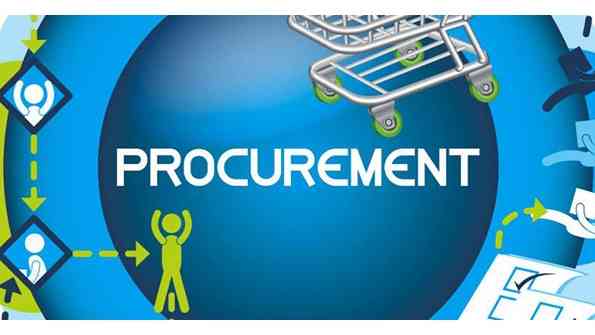
Whenever supply chain professionals start looking at procurement through the lens of key performance indicators (KPIs), the conversation will change for the better.
There is an old truism, which says you cannot manage what you cannot measure. Procurement professionals must take this statement to heart when thinking about performance levels.
It is hard to ignore the fact that suppliers are an organisation’s partner in success or in crime. An organisation is only as good as its sources of supply. KPIs offer a clear view of procurement operational activities, assisting supply chain professionals to make informed decisions based on data rather than assumptions or guesswork. KPIs are an anchor and guide for businesses to make smarter, more informed decisions.
Remember, the path to an efficient procurement process lies in understanding your current supplier performance levels and continuously striving for excellence, enabling organisations to focus on what truly matters — profitability.
Measuring delivery-related KPIs is a strategic imperative. It is a value proposition. It is important to agree with suppliers on achievable performance timelines based on their capabilities. It is also very important to establish how well suppliers adhere to agreed delivery schedules, on time and in full.
KPIs under this category will seek to measure the percentage of orders that are delivered on time as per agreed terms and conditions. This KPI can be assessed through metrics such as defect rates, rejection rates and customer complaints related to delivered products or to services provided.
Negotiating for favourable procurement deals will not count for much if vendors fail to abide by the agreed terms and conditions.
KPIs under this category will assist supply chain professionals to optimise time, improve service quality and manage spending, while driving cost savings. Metrics under the delivery category will also track and report product concerns such as defects, returned or damaged goods. In industries such as aerospace, automotive and pharmaceuticals where the stakes are high, monitoring of supplier defect rates is crucial.
- Procurement key performance indicators simplified analysis (I)
- Procurement KPI simplified — Part (I)
Keep Reading
It must always be remembered that the success of your procurement team is closely linked to your vendors. Metrics related to purchase order cycle time must make use of digital tools to speed up purchase order processing by getting rid of valuable time spent on manual processes.
Supply chain professionals are fully aware that automation will be instrumental in the creation of standard procedures to streamline repetitive tasks, reducing errors and procurement delays.
Tracking this performance metric will assist procurement to proactively avoid potential disruptions and the potential high sourcing costs that emanate from switching to alternative suppliers in the event of product shortages.
Procurement teams know better than most, that time is money. Supplier quality ratings will evaluate delivery speed, supplier responsiveness and the quality of service.
It will help organisations to maintain product integrity, minimise defects and enhance customer satisfaction. Where challenges are identified, supply chain professionals will take corrective action such as implementing quality improvement initiatives.
It is also important for supply chain professionals to measure the capacity of suppliers to reduce the emergency purchase ratio of products through the adoption of forecasting tools to predict future supply chain requirements more accurately.
It is also important to assess whether your organisation has managed to build a robust and reliable network of suppliers with the capacity and capability to respond to unexpected purchase requests or those who are able to handle supply chain disruptions at short notice.
It may also be important to measure whether your supply chain partners have the capacity to maintain a safe stock of critical items that may be wanted as emergency requirements.
Even with the most detailed planning, there are bound to be occasional emergencies when supplies are needed at short notice.
It must be remembered that emergency requests are inevitable for all supply chains, but it must be equally remembered that, often times, they come at a huge cost. Vendors have got a tendency to charge premium prices for quick turnaround times.
High emergency purchase ratios may indicate poor planning, lack of inventory management, or inefficient supplier relationships. Emergency purchases are bad news for your operational costs and business continuity. It is therefore important to monitor the number of purchases that are done at short notice and discourage them at all costs.
Efforts to keep the emergency purchase ratio low will help organisations to avoid process bottlenecks and product shortages. Monitoring cycle times will assist in the identification of bottlenecks and inefficiencies in the procurement process, enabling supply chains to streamline workflows as well as implement preventative measures.
The KPIs to measure lead times are also very important. Lead time reflects the supply chain efficiency and trustworthiness of the organisation’s vendors. Metrics such as order accuracy measures the percentage of purchase orders that are fulfilled correctly without errors or discrepancies in terms of quantity, product specifications or delivery details.
The assessment of such metrics is essential for the maintenance of smooth supply chain operations, while minimising disruptions and avoiding costly returns or rework. Measuring this KPI is very important because the timely delivery of goods and services is critical for maintaining production schedules, meeting customer demands and avoiding costly delays or stockouts.
The order accuracy metric will also involve the assessment of compliance to pricing structures, service level agreements, agreed payment terms and delivery terms.
Purchase order cycle time is an indicator of the strength of the procurement team, where it is defined as the time between receipt of purchase requisition to the moment of releasing the purchase order to vendors.
This KPI measures the efficiency of the procurement process in handling RFQs, quote comparisons, purchase order approvals and any other intermediary tasks. Shorter purchase order cycle time confirms an efficient procurement strategy.
KPIs under this category enable procurement teams to monitor and assess their own performance, pinpoint areas that require service improvements, and track progress towards procurement excellence.
Key performance indicators that are laser focussed on inventory are equally important.
Supply chain professionals are fully aware that inventory does not sit in a warehouse for free. It quickly turns into a liability if not utilised over a protracted period of time.
It is therefore common knowledge that a large amount of aging inventory can drag down profits especially where it will end up being either disposed of or discounted due to obsolescence.
Measuring cycle times are therefore very important in inventory management. The faster things happen, the less working capital is tied up in stock, and the better the availability of cash flow resources. Supply chain professionals will seek to shorten supplier lead times with a view to find opportunities to reduce safety stock levels and gain other inventory management wins for your organisation.
Inventory costs include tangible costs such as warehouse costs, maintenance costs, wages costs and insurance costs coupled with intangible costs such as depreciation, opportunity costs, obsolescence or spoilage costs. Supply chain professionals will often prefer shorter lead times, as they will assist in reducing the inventory holding costs and enable faster response to market demands.
Streamlined procurement processes lead to lower inventory holding costs and reduced carrying costs. KPIs under this category will serve as a crucial indicator of how well inventory contributes to the company’s overall financial health.
By regularly monitoring these metrics, procurement teams can identify areas to streamline operations and deliver more value to their organisations.
Higher inventory turnover ratio generally reflects that an organisation is selling its inventory quickly and efficiently, while a higher inventory aging ratio reflects the blockage of working capital through slow moving goods.
In conclusion, it must be noted that supply chain professionals are spoilt for choice when it comes to the key performance indicators at their disposal.
In a forest of metrics readily available for use, selecting the most relevant ones is the path to uncovering a robust supplier performance management system.
This array of performance metrics can identify loopholes or gaps in the procurement pipeline, assist in the revision of resource utilisation while at the same time streamlining purchasing processes. The significance of KPIs is that instead of telling you an outcome, they will also show you how you got there.
KPIs allow supply chain professionals to manage procurement processes based on facts and data and not mere assumptions. Procurement KPIs are quantifiable metrics that are mainly used for evaluating the efficiency, effectiveness and overall performance of procurement process flows. By tracking such key metrics, supply chains will be in a position to gain visibility into expenditure patterns, identify areas of maverick spending and explore opportunities for cost minimisation.
It is not easy to forget that expenditure patterns that supply chain professionals are unable to see are at risk of being mismanaged, leading to financial inefficiencies, unoptimised procurement practices and missed business opportunities that create value.
The saying — if you cannot measure it, you cannot improve it — holds as true as ever. In business every penny counts, and KPI metrics will ensure that not even a cent slips through the cracks. Procurement KPIs are your north star for the success of your procurement efficiencies.
Professors will often write that what gets measured, gets managed. You cannot improve what you cannt measure. KPIs will ensure that procurement strategies are in lockstep with overarching business goals enabling a unified approach to achieving organisational success and focusing on efficiencies that bring value beyond the invoice.
Keeping the pulse on procurement performance will ensure that every dollar is accounted for, wisely spent and contributing to the business’ big picture goals.
- Nyika is a supply chain practitioner based in Harare. — [email protected].











